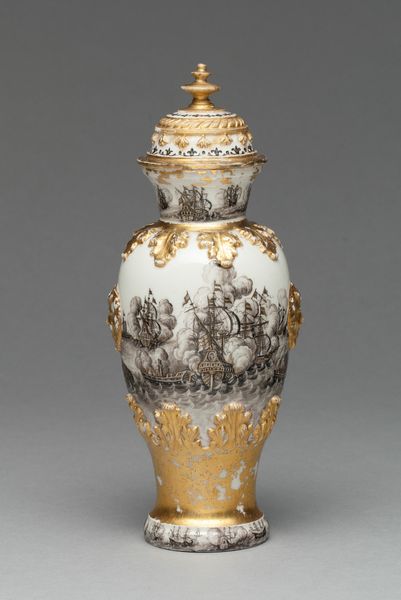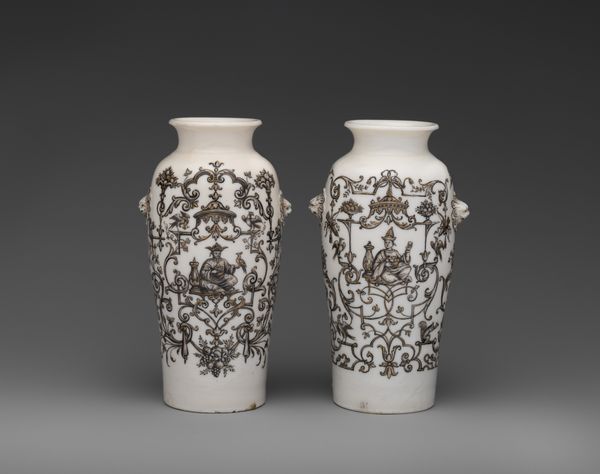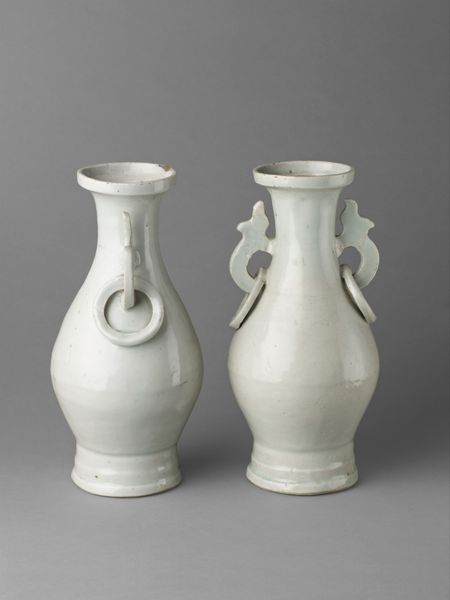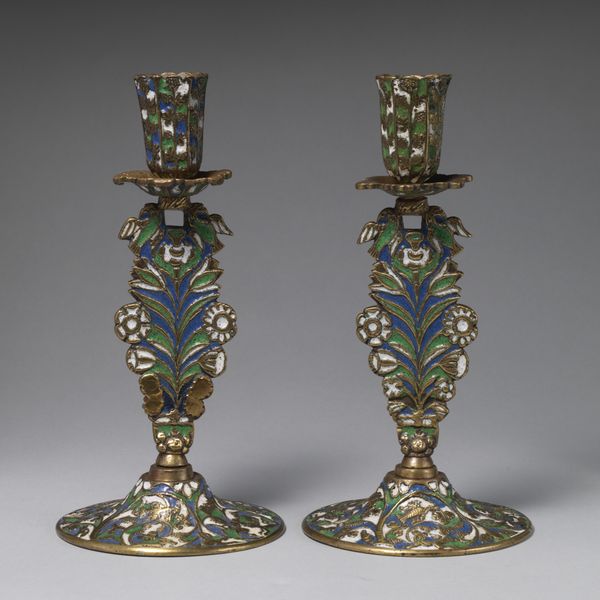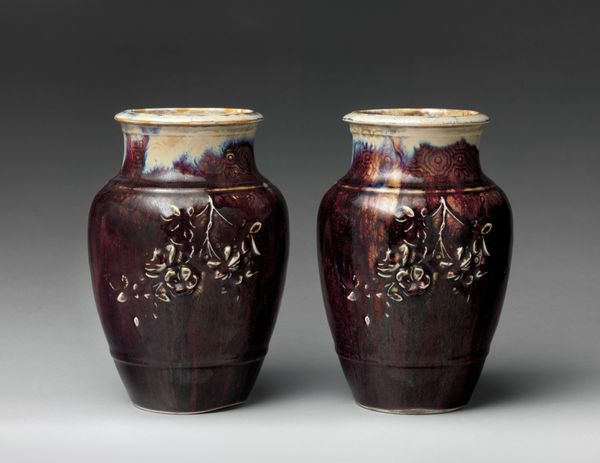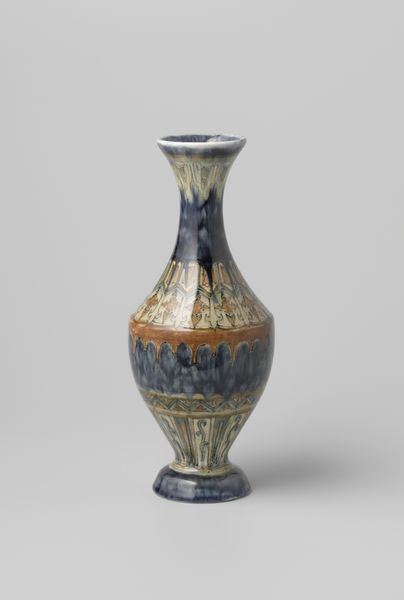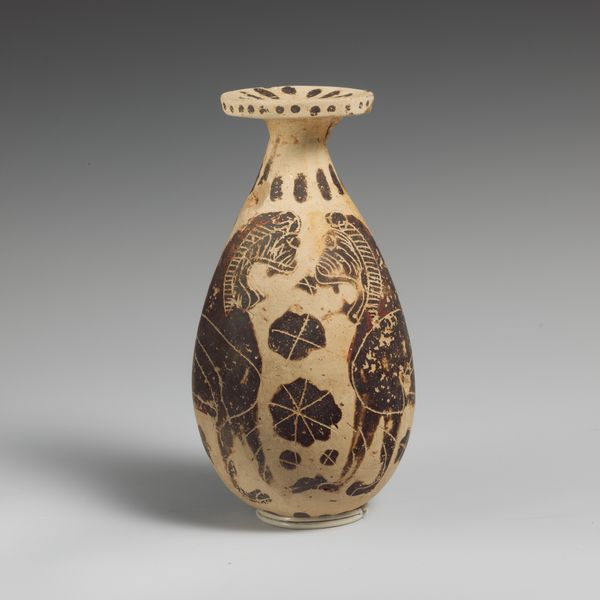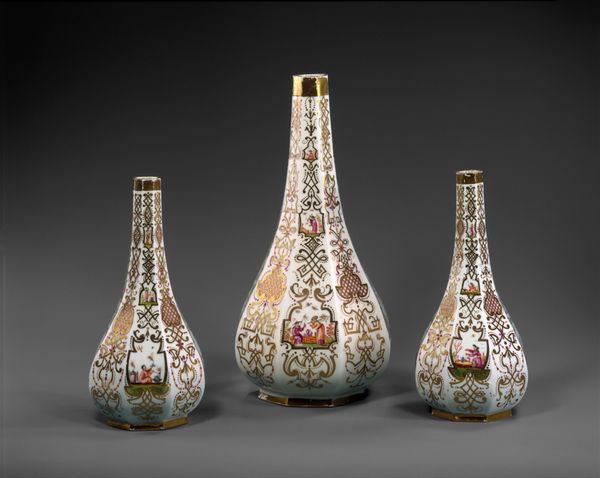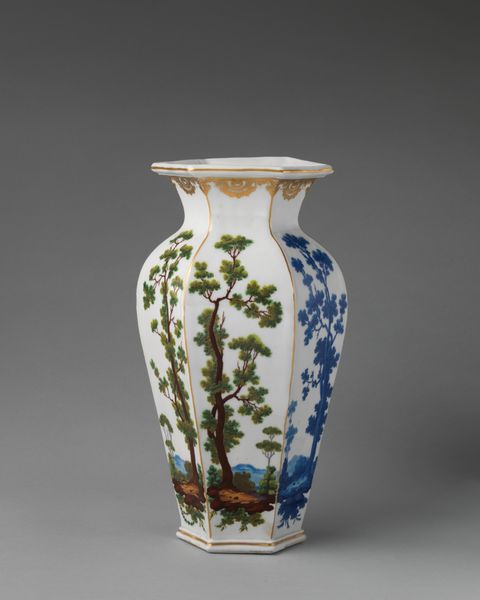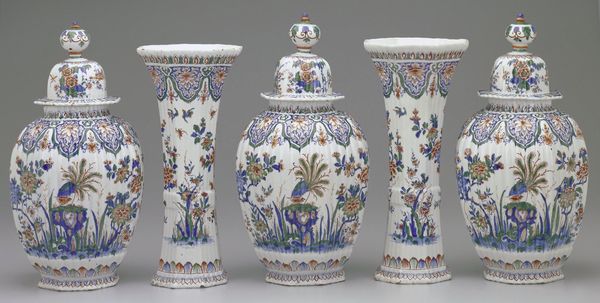
porcelain, sculpture
#
baroque
#
porcelain
#
sculpture
#
men
#
history-painting
#
decorative-art
Dimensions: Overall (confirmed): 8 11/16 × 4 7/16 × 3 13/16 in. (22.1 × 11.3 × 9.7 cm)
Copyright: Public Domain
Curator: Looking at these vases by the Meissen Manufactory, crafted between 1713 and 1725, it's hard not to see them as relics of a very specific worldview. What do you make of them? Editor: The high gloss of the porcelain, that garish gold leaf, the swirling depiction of naval battles – it smacks of conspicuous consumption and a celebration of imperial power. Curator: Precisely! We see that tension between artistry and ideology so clearly. The decorative arts aren’t innocent; these vases embody the violence of history painting within a domestic object. They bring warfare into the drawing room, literally. Editor: Absolutely. These vases are made of porcelain, which itself speaks to complex trade routes and colonial exploitation. The materiality connects to global systems of labor and extraction. And what were the working conditions like for those who molded and painted these scenes? Curator: Right, who actually benefits from the visual depiction and celebration of masculine dominance and maritime control represented here? Were these images a projection of a power structure as much as an intent? How were such objects consumed and engaged with in a world stratified by social, economic, racial, and gender hierarchies? Editor: It’s fascinating to consider porcelain, a relatively delicate material, being used to portray such a robust subject as naval battles. The fragility clashes with the bombastic scenes depicted. What was that tension meant to evoke, or to justify? Curator: That contrast underscores the delicate balance upon which power rests, I think. They speak volumes about the era's ambitions and anxieties. They function almost like miniature stage sets showcasing dominance, intended to convey a sense of unshakeable authority even as the very material betrays how contingent everything is. Editor: The detail achieved is stunning—almost disturbingly celebratory. How did this manufacturing process affect the labor practices of the artisans? Were their creative contributions respected, or were they merely following instructions? Curator: It brings up all those critical questions around the separation between art and craft, between design and execution. And those questions resonate across history, informing how we evaluate production and creation still. Editor: Exactly. Seeing them like this, under these lights and in this setting, it gives them new dimensions. Curator: It's more than meets the eye and what feels initially ornamental.
Comments
No comments
Be the first to comment and join the conversation on the ultimate creative platform.
